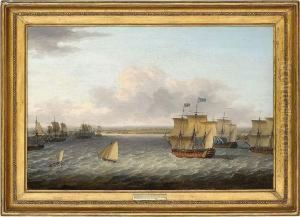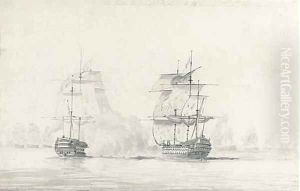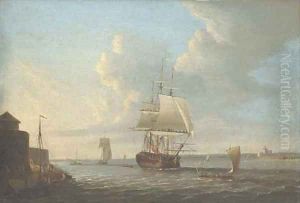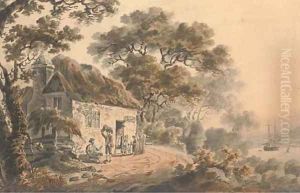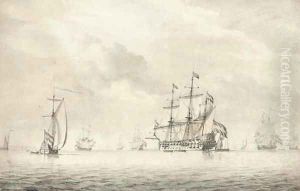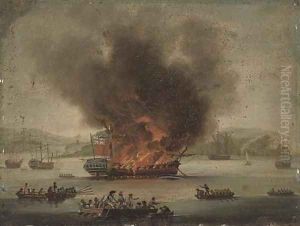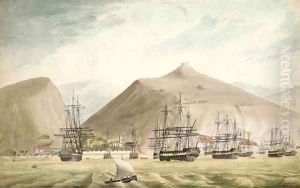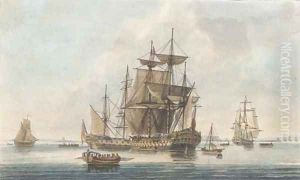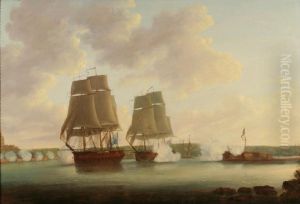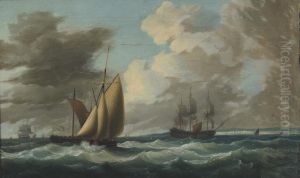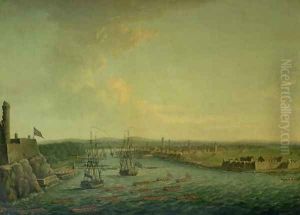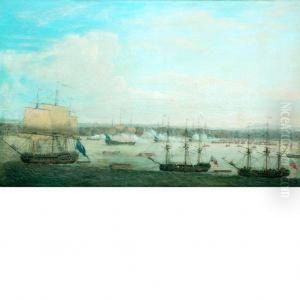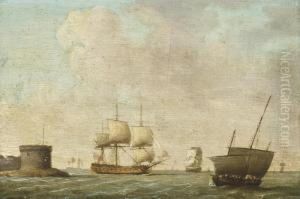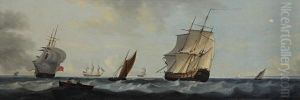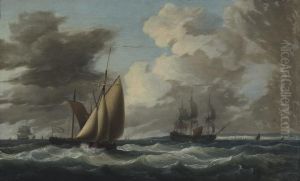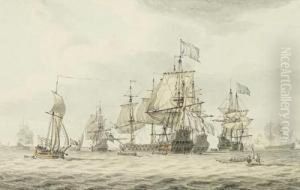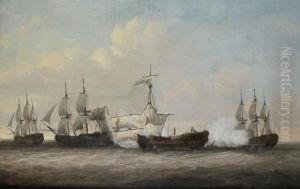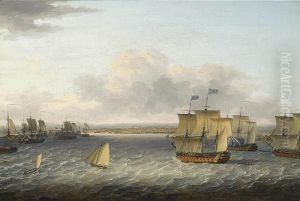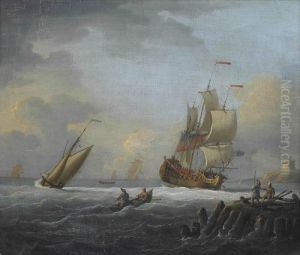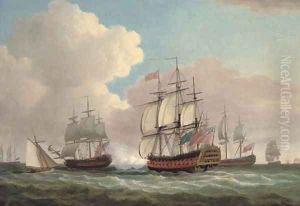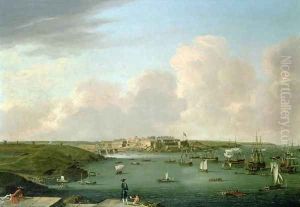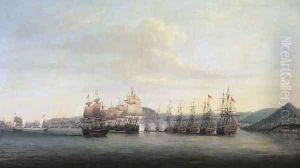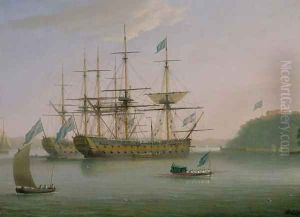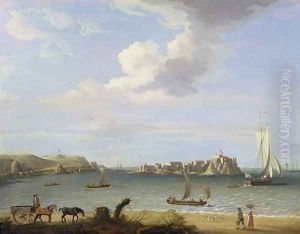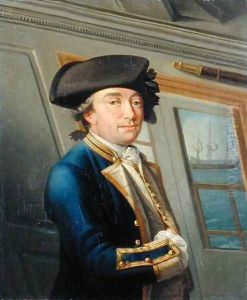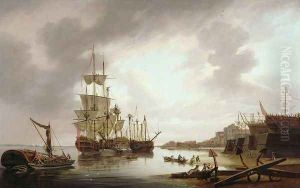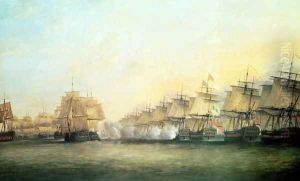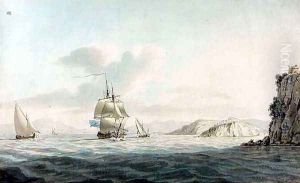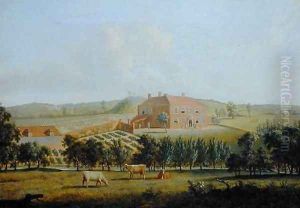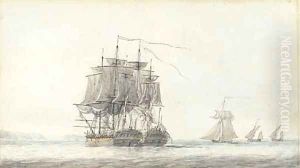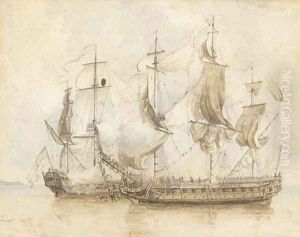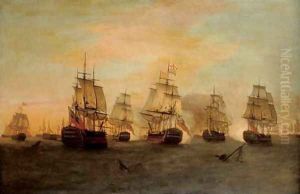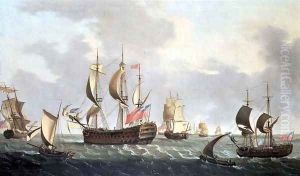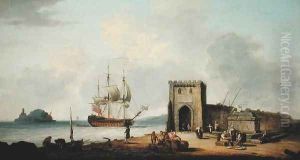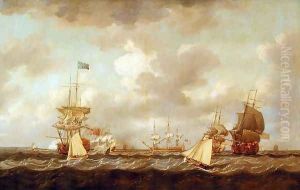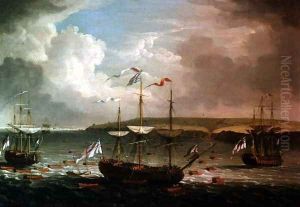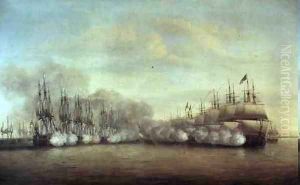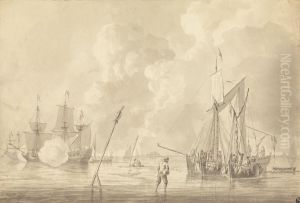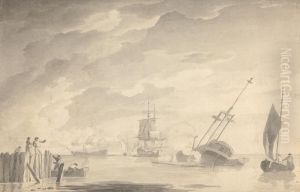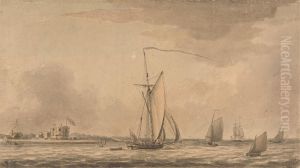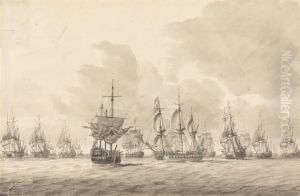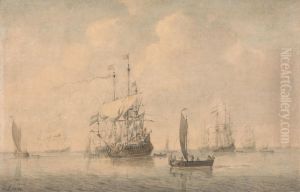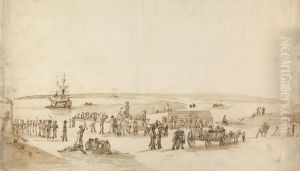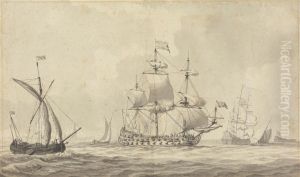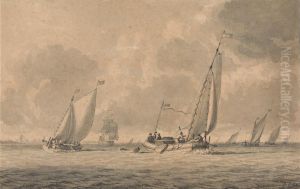Dominic Serres Paintings
Dominic Serres, originally named Dominique Serres, was an influential marine painter who became an important figure in British art during the 18th century. Born in Auch, Gascony, France, in 1722, Serres' initial career was not in the arts; he was meant to enter the priesthood. However, with a strong inclination towards painting, he left for Spain to pursue an art career. His early life and training are not well-documented, but it is known that he spent some time in a Spanish monastery, where he may have received his first lessons in painting.
In the 1740s, Serres moved to England, which became his adopted home. There, he encountered the patronage of Admiral Philip Keppel, who became a significant figure in his life and career. Keppel's encouragement and connections helped Serres gain commissions that allowed him to specialize in marine painting. By the 1750s, Serres had established himself as a respected artist, depicting naval battles, harbor scenes, and ship portraits with a notable sense of realism and detail.
Serres' reputation grew, and in 1768 he was a founding member of the Royal Academy of Arts in London, a testament to his standing in the British art scene. His work was recognized for its contribution to marine art, a genre that held particular significance during a period when Britain's naval power was of paramount importance to its identity and status as an emerging empire.
Throughout his career, Serres exhibited at the Royal Academy and also became involved in the administration of the Academy, which further solidified his reputation. He served as the 'Librarian to the Academy,' a role in which he was responsible for the organization and care of the Academy's books and prints.
Dominic Serres' legacy includes his role in the development of British marine painting. His exacting detail and atmospheric effects influenced the next generation of marine artists. He was also the master of the painter John Thomas Serres, who was his son and followed in his footsteps as a marine artist.
Dominic Serres passed away in London in 1793. His works continue to be celebrated for their historical value and artistic merit, capturing the grandeur and intensity of the seafaring age in which he lived.
